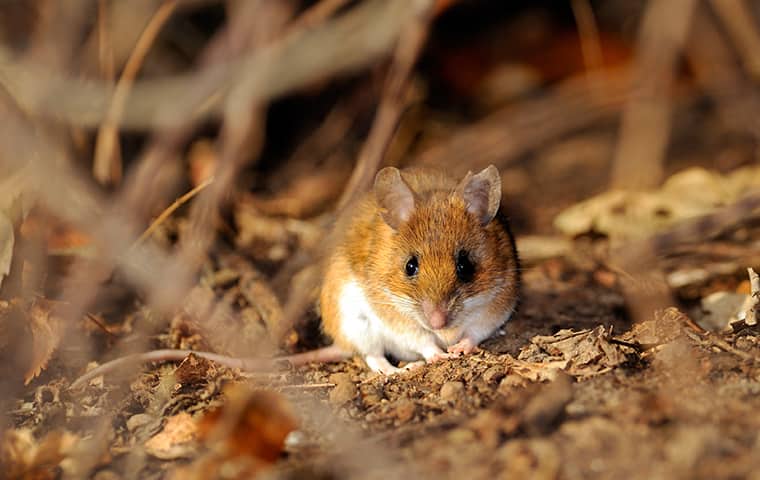What are mice?
Mice are a type of rodent. They are adaptable, and can be found living in a variety of environments. Many species of mice have come to somewhat rely on people for the food, water, and shelter sources they provide. Mice are known as commensal rodents. All rodents, including mice, are identified by a single pair of continuously growing front incisors, found in the upper and lower jaw. One of the more common species of mouse found in Illinois is the field mouse.
Field mice are usually gray or tawny brown in color, and their underbellies are covered in white hairs that extend back behind their tails. They have lighter-colored or white feet, large dark eyes, and thin prominent ears. Field mice have short tails that are about the same length as their bodies and covered in fine hairs.
Are mice dangerous?
Mice are dangerous due to the diseases they spread, their potential to contaminate food sources, and their ability to damage the structures of buildings and personal property. Field mice are carriers of the dangerous Hantavirus. Hantavirus can lead to Hantavirus Pulmonary Syndrome, which causes serious respiratory problems. It is spread through the urine and feces of field mice.
Field mice are also considered to be dangerous because they can introduce parasites like fleas and ticks into your home. They contaminate food, food prep areas, and the surfaces of your home with bacteria, urine, feces, and saliva. They have the potential to damage the structure of your home and personal property by chewing on and through wires, pipes, insulation, drywall, clothing, furniture, flooring, pictures, and books.
Why do I have a mouse problem?
Mice choose to live on properties that meet their basic needs for food, water, and shelter. Garden areas, compost piles, pet food, open containers of garbage, outdoor eating areas, bird feeders, bird baths, wild animal feed, wood piles, dense vegetation, and piles of debris will all draw mice to your property. Mice are a year-round problem, but they potentially become a bigger problem in the late fall when they seek safe, warm shelter where they can overwinter.
Where will I find mice?
Mice live and nest in a variety of places. They live outside and inside homes and other buildings but prefer to live outside. They nest in fields, farmland, under logs, in tree stumps, within tall grasses, and under dense brush and vegetation. Field mice are excellent climbers, and are often found nesting in attics. They also take up residence behind walls, in basements, and inside crawl spaces.
How do I get rid of mice?
The best solution to a mouse infestation is a professional solution. At Crown Exterminators, our certified service technicians provide outstanding rodent control solutions to eliminate your current pest problems, and prevent future problems with pests.
The experts at Crown Exterminators are dedicated to using the latest scientific techniques and up-to-date products, practices, and procedures to get rid of and control mice and other household-invading pests. To learn more about preventing problems with mice in your Sauk Valley or Northern Illinois-area home or property, or to schedule a free inspection, call Crown Exterminators.
How can I prevent mice in the future?
Keeping mice off your Illinois property and out of your home can be difficult.
There are a few things you can do to help deter them:
Remove wood piles, piles of leaves, and garbage or debris from your property.
Make sure that outdoor trash cans have tight-fitting lids on them.
Place gardens, compost piles, and wood piles a distance away from the exterior of your home.
Remove bird feeders from your property.
Seal cracks in the foundation and exterior walls of your home.
Pick up pet food between feedings.
Repair leaky outdoor pipes, fixtures, and maintain gutters.
Fill in spaces around utilities and wires entering your home through its exterior.
Repair any loose or missing shingles.
Make sure chimneys have tight-fitting caps.
Repair holes along your roofline and at roof intersections.


